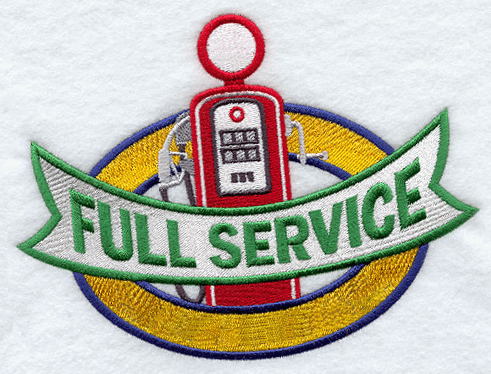Brands, agencies and publishers agree: 2015 is the year of programmatic branding

This article was written by Martin Stockfleth Larsen, Chief Marketing Officer, Adform
As the old joke goes, New York will be a great city — once it’s finished.
The same could be said for ad tech. Once the demand and supply sides are sync’d, once the marketplaces are perfected and the publishers are on-board, once the metrics and reporting are unified… Once everything is finally done, Ad Tech City will be a great place to live.
It’ll never happen, of course. Ad tech is forever innovating.
We have, however, reached an important milestone: It is now possible to execute full-service, at-scale programmatic branding campaigns. Thanks to full-stack service providers, brand advertisers can now purchase premium inventory with cross-screen reach, robust audience data and engagement metrics, and full support for real-time bidding.
Rich-media, cross-screen branding can finally be automated
Traditionally, achieving “top-of-mind” among consumers meant carpet-bombing TV networks with primetime ads. Today, the television is just one of many screens, and brands are shifting their spend online with a high priority on device saturation. They know that brand-building needs more than video. It needs creative formats at a global scale; it needs cross-screen support to achieve desired reach and extend exclusivity on certain formats; it needs to stand out from the competitors.
With programmatic branding, wide-reaching, highly customized premium campaigns can be automated. Earlier this month, for example, Burberry bought takeover units on Yahoo’s front pages, served programmatically to users in the UK, Germany, France, Italy and Spain with help from Amnet and Adform.
Just two years ago, such a campaign would’ve been prohibitively expensive, if not downright impossible. But thanks to full-stack providers, Burberry’s campaign is a case study for programmatic branding’s possibilities. Even the most creative campaigns can now be executed — at scale, within budget — on one-to-one terms with premium publishers.
Programmatic branding means more opportunities for agencies
According to eMarketer, rich media delivers higher CTR compared to standard banners. Engagement and conversion, too, are shown to be greater with rich media, especially on mobile. Yet, rich media currently accounts for just 7.4 percent of digital ad spend in the U.S.
Besides being cheaper and easier to create, display also yields more data. Especially when served programmatically, display ads can be tracked, measured and reported with great accuracy. Naturally, agencies rely on these numbers to determine ROI
This same data can now be delivered for programmatic brand campaigns. As with display, Programmatic Display of course yields standard engagement metrics. But by working with the right partners, brand clients can also customize their algorithms to concentrate on those variables that are most important to them. Time spent on ad and engagement rate, for example. Or viewability. Conversion. And so forth.
Furthermore, data earned from a brand awareness campaign can now be used in later performance-based retargeting campaigns — to drive Facebook likes, for example, or Pinterest pins.
The benefits are clear: Agencies can now create more engaging campaigns and execute them at scale without the prohibitive costs once associated with ambitious spends.
Programmatic branding is a boon for publishers
Let’s face it — Pepsi isn’t buying below-the-fold remnant space.
To nail down that critical top-of-mind, brands buy premium inventory. And for good reason: According to our research, above-the-fold CPM increased by 6 percent between the second and third quarter of 2014. In the same time period, above-the-fold CTR increased by 23 percent.
Publishers are fully aware of this, but few publishers have been willing (or able) to throw the necessary capital, be it fiscal or human, at the challenge of selling premium inventory at greater scale. With programmatic branding, publishers can finally enjoy the same benefits of real-time bidding as on their remnant space — at much-needed premium rates.
The benefits go both ways, of course. Publishers can now open up their own data for use in brand campaigns and also tap into second- and third-party sources — allowing brand advertisers to engage with readers at unprecedented scale.
Brands are the next stage for programmatic
Though a favorite topic among marketers in 2014, programmatic ad buying and selling has been around for more than five years. Because it delivered the kind of data that directly informs ROI, programmatic has been popular mostly with display advertisers. Benefits like brand lift and awareness were considering beyond programmatic’s reach.
Not any more. Thanks to these new brand-first developments, programmatic no longer means robotic.
More from Digiday

Marketers are keen to use generative AI in ad campaigns, but hidden costs lurk
Marketers across the industry want to use AI to cut down on time spent in creative production. It’s not so simple in practice.

2025 was rough for Target. It could also be the year when its turnaround began
Much of the front half of the year for Target was defined by the company’s decision in January to pull back on DEI initiatives.

‘A year of loose ends’: Digiday editors share top takeaways from 2025
This year was filled with major developments – from Netflix’s planned WBD deal to Omnicom’s acquisition of IPG to Google’s ultimately cookie reversal – and Digiday editors Sara Jerde and Seb Joseph help to recap the year that was (and wasn’t).





